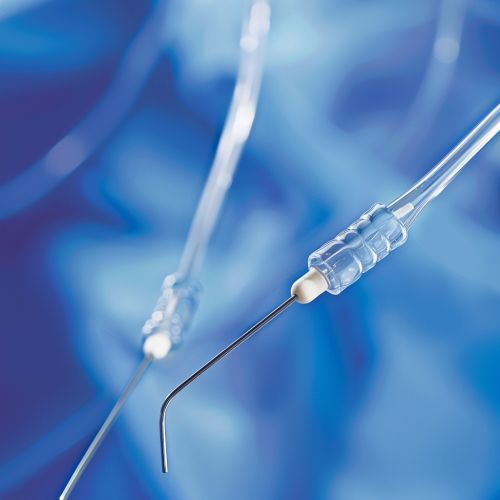Pacing Catheters
Introduction
A pacing catheter is a medical device used in the management of certain cardiac conditions. It is a type of catheter that is inserted into the heart to deliver electrical impulses, mimicking the heart's natural pacemaker, the sinoatrial node. This article delves into the intricate details of pacing catheters, their types, uses, procedure of insertion, and potential complications.


Types of Pacing Catheters
Pacing catheters can be broadly classified into two types: temporary and permanent.
Temporary Pacing Catheters
Temporary pacing catheters are used for short-term cardiac pacing, typically in emergency situations or during certain surgical procedures. These catheters are usually inserted through a large vein in the neck or groin and threaded into the heart.
Permanent Pacing Catheters
Permanent pacing catheters, often referred to as pacemakers, are used for long-term cardiac pacing. They are surgically implanted under the skin, usually in the chest area, and are connected to the heart via one or more leads.
Indications for Use
Pacing catheters are used in a variety of cardiac conditions where the heart's natural pacemaker or the electrical conduction system of the heart is malfunctioning. Some of these conditions include:
- Bradycardia: A condition characterized by an abnormally slow heart rate.
- Heart block: A condition where the electrical signals in the heart are delayed or blocked.
- Cardiac arrest: A sudden loss of heart function.
- During and after cardiac surgery: To maintain a stable heart rate and rhythm.
Procedure of Insertion
The procedure of inserting a pacing catheter varies depending on whether it is a temporary or permanent catheter.
Temporary Pacing Catheter Insertion
The insertion of a temporary pacing catheter is usually performed under local anesthesia. The catheter is inserted through a large vein in the neck or groin and guided into the heart using fluoroscopic guidance. Once in place, the catheter delivers electrical impulses to the heart to regulate the heart rate.
Permanent Pacing Catheter Insertion
The insertion of a permanent pacing catheter, or pacemaker, is a surgical procedure performed under local anesthesia and sedation. A small incision is made in the chest area, and the pacemaker is implanted under the skin. The leads are then threaded through a vein into the heart and connected to the pacemaker.
Complications
While pacing catheters are generally safe and effective, they are not without potential complications. These may include:
- Infection: This can occur at the site of insertion or within the heart itself.
- Dislodgement: The catheter or leads may move out of place, requiring repositioning or replacement.
- Perforation: Rarely, the catheter may puncture the heart or a blood vessel.
- Pacemaker syndrome: This can occur with permanent pacing catheters and is characterized by a variety of symptoms such as dizziness, fatigue, and shortness of breath.
Conclusion
Pacing catheters play a crucial role in the management of various cardiac conditions. They provide a means to regulate the heart rate and rhythm, thereby improving cardiac function and patient quality of life. Despite potential complications, their benefits in maintaining cardiac stability and preventing life-threatening arrhythmias are significant.
